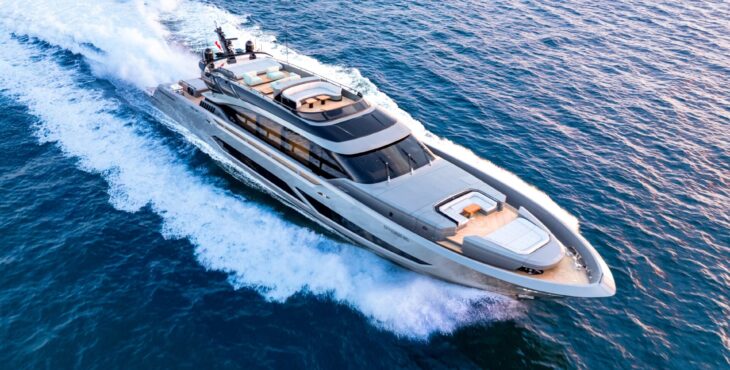Personal Branding for Captains and Skippers
Marketing and communication to build a professional identity that makes a difference

Personal Branding for Captains and Skippers
Marketing and communication to build a professional identity that makes a difference
In professional yachting, charisma has always played a central role. But today, what truly makes the difference is not only competence at the helm: it is the ability to position oneself as a brand. In other words, captains, skippers, instructors, and marine professionals are no longer communicating just their technical skills they need to tell the story of who they are, how they work, and why someone should choose them.
This is where personal marketing comes in: a strategic approach that allows one to build a recognizable, credible, and distinctive identity, capable of speaking not only to colleagues and yacht owners but also to potential clients, brokers, agencies, and shipyards.
Why Personal Branding matters (even at Sea)
Word of mouth is still important, but today the first impression is often digital. A captain sought for a superyacht, an instructor for an ocean crossing, or a skipper for a charter season is also evaluated based on their online reputation. And in marketing there is a simple rule: if you don’t communicate, others will communicate for you.
Having a polished LinkedIn profile, a consistent Instagram feed, and a well-structured personal website means building digital authority. In practice, it can be the difference between being noticed or being overlooked.
The Key Ingredients of a Winning Nautical Brand
Personal branding does not mean becoming an influencer; it means managing your image as a brand. The key elements are:
- Differentiating Value (Unique Value Proposition): what sets you apart? Your technical experience, leadership style, training approach, or focus on safety?
- Authentic Storytelling: not just telling what you do, but how and why you do it. The sea is already a powerful stage for narratives.
- Strategic Content: onboard experiences, technical insights, advice, and navigation moments turned into communication highlights.
- Social Proof: reviews, testimonials, collaborations, media coverage. In marketing, reputation is the most valuable currency.
- Consistent Visual and Verbal Identity: colors, tone of voice, communication style. Every detail shapes perception.
Where to be present: the most effective Platforms
- LinkedIn: to position yourself as an authoritative professional and connect with shipyards, brokers, and sailing schools.
- Instagram and TikTok: ideal for visual storytelling, showcasing not only technical skill but also lifestyle and values.
- Personal Website or Blog: the “headquarters” of your brand, particularly useful for trainers, consultants, and speakers.
- Crew platforms (Yotspot, CrewHQ): essential for standing out among dozens of candidates.
From a marketing perspective, the goal is not to be everywhere, but to choose the platforms best suited to your target and manage them with a coherent strategy.
International Case Studies
Some marine professionals have turned their experience into genuine personal brands. Some have created YouTube formats, others share nautical tips on Instagram, while others have launched newsletters to narrate life at sea.
An international example is American captain Kelly Gordon, who has built a digital identity that is incisive, credible, and distinctive: not only professionalism, but also human leadership, passion, and discipline. A perfect mix of branding and authenticity.
Italian Case Studies: when the Sea meets Digital
Alongside international examples, Italy is also seeing the rise of professionals who understand the value of personal branding in marketing. Two particularly interesting cases, though different in style and target, are:
- Francesco Orlando – @yachtprofessor_ita. Known as Yacht Professor, he has built on TikTok and Instagram an educational format that combines technical expertise with simple language, appealing to a young and curious audience.
His approach is a true example of content marketing: short videos, direct messaging, and educational content that build trust and position him as an accessible expert. Orlando demonstrates that even in the nautical sector, a fresh tone and “pop” platforms can become levers of digital authority. - Beppe Veirana – @dimensionevela. With Dimensione Vela, he has built on Instagram a community that goes beyond the service offered (courses and sailing trips) and revolves around a lifestyle. Curated photos, storytelling of onboard experiences, and a strong emphasis on the human value of sailing: his profile is an example of brand experience applied to yachting. He does not just sell an activity, but an identity and a sense of belonging, turning clients and students into brand ambassadors.
Though very different, these two cases highlight one truth: there is no single model of nautical personal branding, but different strategies depending on the target, desired positioning, and communication style.
Personal Branding is not Vanity, it’s a professional Route
In marketing, a brand is an asset. For a captain or skipper, this means managing one’s reputation strategically: not inventing a persona, but giving voice to true professional value. It is a long-term investment that makes you more competitive, strengthens credibility, and opens new career opportunities. As Kotler would say: “A brand is a promise.” It is up to each marine professional to decide what promise to make and how to communicate it.
The sea does not forgive improvisation. Neither does marketing: “Who you are matters. But how you tell it… sets the course.” This is where personal branding becomes both compass and helm: guiding toward a more solid, recognized, and sustainable career.



